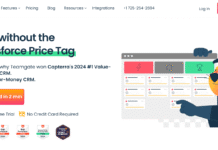Fortnite VR Startup: Exploring the Future of Virtual Reality Gaming and Innovation
Introduction
The global gaming industry is undergoing a technological transformation, and virtual reality has become one of the most disruptive forces shaping its future. As hardware becomes more affordable and immersive experiences gain popularity, VR gaming continues to evolve from experimental concepts into commercially viable ecosystems. Among established titles that could influence this evolution, Fortnite stands out due to its social engagement, creativity, and global player community.
The idea of a Fortnite VR startup is not based on an existing product but rather a speculative and strategic concept. It represents the possibility of merging the cultural power of Fortnite with the technological potential of virtual reality. This article analyzes what a hypothetical Fortnite VR startup could achieve, how it might function within the gaming and business ecosystem, and what challenges such an initiative would face.
While Epic Games, the developer of Fortnite, has not announced or confirmed any VR version of the game, the broader idea of “Fortnite-like VR startups” is gaining interest among developers and investors. This analysis explores that space, emphasizing market dynamics, technical feasibility, and the entrepreneurial opportunities surrounding immersive gaming.
The State of Fortnite and Virtual Reality
Fortnite, launched by Epic Games in 2017, revolutionized the gaming industry by combining fast-paced competition with user-generated creativity. Its ecosystem hosts battle royale gameplay, social hubs, and live digital events that blur the boundaries between gaming and entertainment. These characteristics make Fortnite an ideal case study for understanding how an immersive experience might function in VR.
However, as of 2025, Fortnite does not have an official VR adaptation. Epic Games has confirmed that such a project is not in development. In a 2023 statement, Epic CEO Tim Sweeney mentioned that a Fortnite VR port is not planned due to performance constraints and user comfort concerns. This official stance provides the factual foundation for understanding why the Fortnite VR startup concept remains a speculative opportunity rather than an existing project.
Despite the absence of an official version, the idea continues to attract attention from independent developers exploring ways to bring Fortnite-inspired gameplay into virtual environments. These efforts are not direct recreations but rather experimental prototypes built to test battle royale mechanics, creative world-building, and social interactions within VR. The growing accessibility of tools like Unreal Engine and Unity has made such experimentation more feasible for startups and small studios.
Why Epic Games Has Not Released an Official Fortnite VR
Epic Games’ decision not to release a VR version of Fortnite stems from a combination of technical, strategic, and market considerations. From a technical standpoint, converting Fortnite’s high-speed gameplay to VR would pose serious challenges in maintaining comfort and preventing motion sickness. The game’s dynamic movement, jumping, and camera shifts would require a complete redesign for VR locomotion systems.
From a strategic perspective, Epic prioritizes cross-platform accessibility. Fortnite’s global success depends on its availability across consoles, PCs, and mobile devices. Introducing a VR-only mode could fragment the user base and limit inclusivity.
Moreover, Epic’s broader strategy focuses on building the Unreal Engine ecosystem, empowering other developers to create their own immersive experiences. This direction leaves space for independent developers or entrepreneurs to experiment with Fortnite-inspired ideas, potentially leading to the formation of a Fortnite VR startup. Such a startup would not compete directly with Epic Games but could explore parallel opportunities within the same design philosophy.
The Concept of a Fortnite VR Startup
A Fortnite VR startup, as a concept, refers to a hypothetical venture designed to replicate Fortnite’s community-driven model within virtual reality. It would combine elements of large-scale multiplayer competition, creative user-generated content, and social connectivity — all within a fully immersive environment.
Rather than being a copy of Fortnite, this startup would be inspired by its principles. It would focus on integrating real-time collaboration, spatial interaction, and creative expression into VR spaces. The appeal of such a project lies in its potential to merge entertainment, creativity, and social interaction into one cohesive experience.
A Fortnite VR startup could also serve as a platform for other creators, allowing users to design and share 3D environments intuitively using motion controls. By fostering user-generated content in VR, it could emulate the participatory success that made Fortnite one of the most culturally significant games of its era.
Opportunities for Startups Inspired by Fortnite
The global VR gaming market exceeded 12 billion USD in 2025 according to reports by Statista and Newzoo, with projections indicating continuous growth over the next decade. This expansion creates fertile ground for startups developing socially oriented or multiplayer VR experiences. While these figures represent the broader VR industry rather than any Fortnite-specific venture, they highlight the strong investment environment surrounding immersive media.
A Fortnite VR startup could capitalize on several key opportunities:
-
Social Integration: Fortnite’s success lies in its social nature. Translating this to VR could create immersive community hubs where players connect beyond traditional gaming.
-
User-Generated Worlds: By empowering users to create, modify, and share 3D environments, a Fortnite VR startup could become a decentralized content creation platform.
-
Cross-Sector Applications: The technology underpinning such a platform could extend to education, architecture, and entertainment, offering collaboration spaces similar to the metaverse concept.
-
Investor Interest: Venture capital funding for VR startups continues to rise. Investors are particularly drawn to models that combine engagement, scalability, and innovative user experiences.
These opportunities make the Fortnite VR startup idea compelling, though realizing them requires overcoming substantial design, technical, and financial hurdles.
Technical and Design Challenges
Developing a functional Fortnite VR startup would involve navigating several major challenges:
Performance Optimization:
VR experiences must maintain stable frame rates (typically 90–120 FPS) to avoid discomfort. Recreating Fortnite’s fast-paced movement and building systems in VR would require extremely efficient optimization across multiple hardware platforms.
Control and Interaction Design:
Fortnite relies heavily on precise aiming and rapid actions. Translating these mechanics to motion controllers would require innovative input systems and intuitive haptic feedback.
Network Scalability:
Fortnite supports up to 100 players per match. Achieving similar multiplayer density in VR would demand advanced networking infrastructure and real-time synchronization with minimal latency.
Safety and Ergonomics:
Comfort must be prioritized. A Fortnite VR startup would need to incorporate features like adjustable field of view, limited motion modes, and break reminders to ensure safe usage.
While these issues make full replication difficult, startups can explore modified approaches — such as smaller-scale VR battle arenas or creative-building simulators — that capture Fortnite’s essence without exceeding current hardware limitations.
The Social and Creative Dimensions of a Fortnite VR Startup
Fortnite’s biggest contribution to modern gaming is its fusion of play and creativity. Players build, experiment, and socialize within a constantly evolving digital space. Translating this to VR opens new frontiers of interactivity.
A Fortnite VR startup could transform user creativity into embodied experience. Imagine constructing structures with natural hand movements, designing virtual events, or collaborating on digital art projects within shared immersive spaces. The social potential extends far beyond gaming — virtual concerts, classrooms, and digital exhibitions could all emerge from the same infrastructure.
The concept also has strong community potential. Startups building Fortnite-inspired VR worlds can create spaces where players’ presence feels real through proximity audio, gestures, and spatial awareness. This level of immersion could redefine online interaction, making virtual communities more tangible and emotionally engaging.
Business and Monetization Strategies
For a Fortnite VR startup to be sustainable, it must adopt viable business models. Current VR gaming success stories indicate that hybrid monetization approaches perform best.
Freemium Access: Offering free core access encourages adoption, while optional premium features or in-game assets generate revenue.
Digital Asset Ownership: Incorporating user-created content and digital economies (possibly supported by blockchain technology) could allow creators to monetize their designs.
Event-Based Income: Following Fortnite’s example, hosting concerts or branded events in VR would create new revenue channels.
Subscription Services: Recurring membership models provide predictable income and stable user engagement.
However, it’s important to note that these models remain theoretical for a Fortnite VR startup. Their feasibility depends on user adoption rates and hardware penetration in the VR market, which, as of 2025, still represent a minority compared to traditional gaming platforms.
Ethical and Accessibility Considerations
Any project resembling a Fortnite VR startup must also address ethical and accessibility concerns. Immersive environments collect sensitive behavioral and motion data, raising privacy issues. Developers must adopt transparent data policies and comply with global privacy regulations such as GDPR.
Inclusion is another critical factor. VR hardware can be expensive, and physical requirements may exclude some users. Designing for accessibility through comfort settings, adaptive controls, and scalable hardware compatibility ensures broader participation.
Psychological safety is equally important. Excessive immersion can blur boundaries between real and virtual environments. Responsible design must include built-in reminders, safety limits, and parental supervision options to maintain user well-being.
Market Overview and Industry Position
To understand the prospects of a Fortnite VR startup, it is essential to evaluate the current state of the global VR gaming industry. The virtual reality market has grown substantially since 2020, reaching an estimated 12.1 billion USD in global gaming revenues by 2025, according to Statista. Analysts predict that this figure could double by 2030 as headset adoption increases and software quality improves.
In this context, the idea of a Fortnite VR startup fits within a broader shift toward immersive, socially connected gaming. Although Epic Games itself has denied plans to develop a VR version of Fortnite, the ecosystem surrounding the game — including creative communities, third-party developers, and metaverse-related startups — continues to explore similar experiences.
The biggest advantage for any potential Fortnite VR startup is brand association. Fortnite’s reputation for large-scale engagement, cross-platform compatibility, and dynamic events provides a conceptual foundation for building a new VR ecosystem. However, startups must distinguish between leveraging Fortnite’s inspiration and attempting to duplicate its intellectual property. Legal and licensing boundaries make it essential for new ventures to create original IP while learning from Fortnite’s business model.
Investment Landscape and Capital Opportunities
Investor interest in VR gaming remains strong, particularly in projects demonstrating sustainable user engagement and social interactivity. Venture capital firms like Andreessen Horowitz and BITKRAFT Ventures have funded multiple VR gaming initiatives since 2023, focusing on multiplayer and creator-centered ecosystems.
For a Fortnite VR startup, this investment climate presents both opportunities and competition. Investors are drawn to startups capable of combining high user retention with scalable revenue streams. A project that demonstrates real community growth, not just novelty, is far more likely to attract long-term funding.
Crowdfunding and early-access models also provide viable pathways for emerging VR ventures. Platforms like Kickstarter and Steam Early Access allow startups to validate their concepts while generating initial funding. A Fortnite VR startup could use these tools to build an early user community before full-scale launch.
In addition to private investment, public-sector funding programs for immersive technologies have expanded. The European Union’s Horizon Europe initiative, for instance, allocates grants for XR (extended reality) development that could support projects similar in scope to a Fortnite VR startup. Likewise, the U.S. National Science Foundation and South Korean tech ministries have funded research into VR interaction and multiplayer networking — areas central to any large-scale VR gaming system.
Strategic Development and Execution Framework
Launching a Fortnite VR startup would require careful strategic planning. The process can be divided into four major stages: concept design, technical prototyping, community testing, and commercial deployment.
Concept Design:
The initial stage focuses on defining the value proposition. The startup must identify its core differentiator — whether it’s large-scale competition, creative tools, or immersive social hubs. Market research, user surveys, and competitor analysis help determine which features resonate most with early adopters.
Technical Prototyping:
Building a prototype allows teams to validate gameplay mechanics, comfort levels, and performance benchmarks. Developers should target consistent frame rates above 90 FPS and minimize latency across networked environments. Testing on multiple headsets, including Meta Quest, PlayStation VR2, and PC-based systems, ensures hardware compatibility.
Community Testing:
Once the prototype is functional, early-access or beta testing provides valuable feedback. Players’ reactions to motion, control schemes, and visual design help refine the experience. Establishing transparent feedback loops between users and developers is crucial for building trust and long-term engagement.
Commercial Deployment:
The final stage involves scaling infrastructure, refining monetization models, and implementing customer support. Marketing strategies should focus on authenticity — showcasing development progress, community stories, and the human side of innovation rather than aggressive advertising.
A Fortnite VR startup that follows this structured approach will be better positioned to handle the complexities of VR game development while maintaining credibility with investors and players.
Collaboration with Established Industry Players
Collaboration remains one of the most effective ways for startups to accelerate growth. A Fortnite VR startup could benefit from strategic partnerships with hardware producers, game engines, and content distribution platforms.
Hardware companies such as Meta and HTC often provide development grants, SDK access, and promotional visibility for promising VR titles. Partnerships with engine developers like Epic Games (through Unreal Engine licensing) or Unity Technologies can enhance production quality. Additionally, working with cloud service providers such as AWS or Microsoft Azure can ensure reliable networking for large-scale multiplayer experiences.
However, partnerships should not compromise creative independence. A Fortnite VR startup must maintain ownership of its intellectual property and avoid dependency on single-platform exclusivity. Cross-platform support — allowing players on different headsets or devices to interact — enhances accessibility and long-term scalability.
Early Experiments and Case Examples
Although a formal Fortnite VR startup does not exist, there have been smaller projects inspired by similar design philosophies. In 2023, several independent studios experimented with VR battle arenas featuring creative construction mechanics and social spaces. For example, the community project “BattleCraft VR” allowed players to build and fight in sandbox environments using motion controls, drawing inspiration from Fortnite’s creative mode.
Another project, “Sandbox VR Social,” focused on integrating multiplayer collaboration and live events in virtual worlds. While smaller in scale, these experiments demonstrate the feasibility of combining user-generated content with VR interactivity. They also highlight practical issues, including motion fatigue and network synchronization, which future Fortnite VR startups would need to solve.
These examples underscore that the concept is not about replicating Fortnite but about reimagining its community-driven engagement model within VR. Startups can learn from these prototypes while developing more efficient, scalable systems for social and creative gameplay.
The Role of Artificial Intelligence in Development
Artificial intelligence (AI) is rapidly becoming a cornerstone of modern game design. A Fortnite VR startup could employ AI to streamline both development and gameplay.
In development, AI can automate world-building, animation, and environmental design. Generative AI tools such as Unreal Engine’s MetaHuman or Unity’s Sentis enable realistic character creation and procedural environments with minimal manual effort. This allows small teams to achieve production quality previously reserved for large studios.
In gameplay, AI can adapt difficulty levels and personalize user experiences. For instance, the system could analyze player behavior and adjust match pacing or visual complexity in real time. AI moderation tools also enhance community safety by detecting and responding to inappropriate behavior.
Moreover, AI-driven analytics can help startups understand player retention trends, session duration, and performance bottlenecks — critical metrics for optimizing both user satisfaction and monetization strategies.
Ethical and Regulatory Framework
As immersive technologies become mainstream, ethical considerations and regulatory compliance have gained importance. A Fortnite VR startup operating in this environment must follow global standards in data protection and online safety.
Virtual reality systems collect sensitive biometric data such as head movement, eye tracking, and voice input. These datasets must be handled responsibly under privacy regulations like the EU’s General Data Protection Regulation (GDPR) and the California Consumer Privacy Act (CCPA). Implementing anonymization and consent systems ensures user trust and legal compliance.
Accessibility should also remain a priority. Inclusive design features such as customizable control schemes, motion sickness prevention settings, and language localization expand the audience base. Ethical innovation requires making VR accessible to as many users as possible, regardless of ability or geographic location.
Regulatory engagement is another emerging area. Startups entering the VR field benefit from participating in industry associations such as the XR Association or IEEE working groups on immersive technologies. These collaborations help shape policy while keeping startups informed about evolving standards.
The Future of Immersive Gaming and Fortnite-Inspired Startups
The long-term vision for a Fortnite VR startup extends far beyond entertainment. As the boundaries between digital and physical worlds continue to blur, VR could become a medium for collaboration, education, and commerce.
By 2030, industry analysts expect VR and AR (augmented reality) to converge into a unified spatial computing ecosystem. Startups building social and creative VR platforms today could eventually evolve into multi-purpose environments — effectively functioning as micro-metaverses. A Fortnite VR startup positioned early in this space could leverage its community-driven DNA to lead this transition.
The next stage of VR development will likely emphasize user empowerment and interoperability. Rather than isolated platforms, immersive ecosystems will connect across devices and industries. A Fortnite VR startup that prioritizes openness, user ownership, and ethical innovation could become a key contributor to that evolution.
Challenges Ahead
Despite promising growth, the path forward is not without risk. VR hardware adoption, while increasing, remains limited compared to traditional gaming platforms. Startups face high development costs, technical complexity, and uncertain user retention. Additionally, motion sickness and physical fatigue remain barriers to mass adoption.
To overcome these challenges, a Fortnite VR startup must focus on accessibility and incremental scaling. Launching smaller, focused experiences — such as creative VR hubs or short-duration multiplayer arenas — can reduce risk while validating the concept.
Another challenge involves maintaining user interest. The initial novelty of VR can fade quickly if content updates are infrequent. Consistent event schedules, user-generated tools, and cross-community collaborations can help sustain engagement over time.
Final Conclusion
The concept of a Fortnite VR startup represents a compelling fusion of established gaming culture and emerging immersive technology. While no official Fortnite VR product exists today, the entrepreneurial opportunity surrounding similar experiences is real and expanding. Startups that draw inspiration from Fortnite’s principles — creativity, collaboration, and community — can play a pivotal role in shaping the next generation of VR gaming.
Success in this space requires realism as much as ambition. Developers must acknowledge technical constraints, adhere to ethical standards, and build genuine community engagement. With thoughtful execution, a Fortnite VR startup could become not just a game but a social platform where imagination, technology, and human connection converge.
As the industry evolves toward a more immersive digital future, those who combine innovation with responsibility will define the direction of virtual reality. The Fortnite VR startup concept, though speculative today, symbolizes that future — where the line between play, creation, and collaboration becomes seamless.
For ongoing research, strategic guidance, and entrepreneurial insights related to immersive startups and gaming innovation, readers can visit startup insights, a resource dedicated to helping founders navigate the emerging VR and metaverse industries.















































